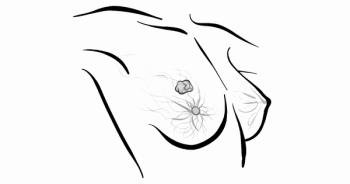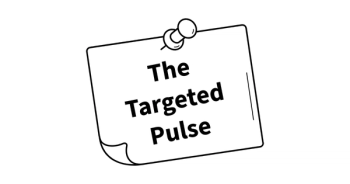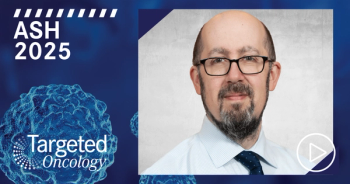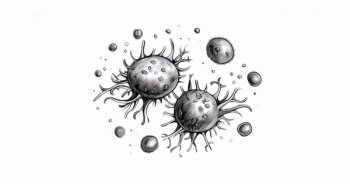
Oral Relugolix Preferred Over Injectables in Advanced Prostate Cancer
OPTYX study shows many patients with advanced prostate cancer preferred oral relugolix over injectables for androgen deprivation therapy.
The OPTYX study (NCT05467176) has completed enrollment and reported early findings on the use of oral androgen deprivation therapy (ADT) relugolix (Orgovyx), which was preferred by many patients with advanced prostate cancer over injectable administration, as presented at the 2025 Genitourinary Cancers Symposium.1
Data from OPTYX showed that most patients (52.2%) in the overall population (n = 999) received relugolix in combination with other prostate cancer therapies, including radiation and systemic treatments. Moreover, a notable portion of treatment initiated was due to a preference for oral relugolix over injection by physicians (41.5%) and patients (36.4%). Other key factors for physician and patient initiation of the agent included rapid testosterone suppression (34.6% vs 9.8%, respectively), safety profile (29.0% vs 9.5%), efficacy data (25.5% vs 6.6%), and rapid testosterone recovery (21.0% vs 10.2%).
“The OPTYX study focuses on the clinical characteristics and preferences for initiating relugolix in a cohort of US patients in real-world care settings,” Daniel E. Spratt, MD, chairman and professor in the Department of Radiation Oncology at University Hospitals Seidman Cancer Center and Case Western Reserve University, and member of the Developmental Therapeutics Program at Case Comprehensive Cancer Center in Cleveland, Ohio, said in a presentation of the data. “OPTYX is the first prospective study to collect long-term, real-world data on relugolix for [the treatment of] advanced prostate cancer. This study aims to provide evidence on the safety, effectiveness, treatment patterns, disease course, and patient outcomes with relugolix.”
In December 2020, the FDA approved relugolix for the treatment of adult patients with advanced prostate cancer.2 The approval was supported by findings from the phase 3 HERO (NCT03085095), which demonstrated that patients who received the agent (n = 622) experienced a medical castration rate of 96.7% (95% CI, 94.9%-97.9%) compared with 88.8% (95% CI, 84.6%-91.8%) among patients who received leuprolide acetate(Eligard, n = 308).3
OPTYX Study Design and Additional Patient Characteristics
The multicenter, observational OPTYX study included adult patients with advanced prostate cancer in the US who initiated treatment with the agent at the time of enrollment or within 1-month preceding enrollment and who were willing to complete patient assessments. Patients with a history of surgical castration, a medical or psychiatric condition that precludes participation, and/or an original treatment plan that is intended to be less than a total of 4 months of relugolix were excluded from the study. 4
Over the course of 3 to 5 years, investigators will collect patient data twice annually. Patient-reported outcomes will be assessed via the Functional Assessment of Cancer Therapy–Prostate scale and patient adherence assessments will be via the simplified medication adherence questionnaire. Patient and disease demographics will also be obtained, including key comorbidities, cardiac risk factors, prostate cancer history, disease progression, current prostate treatments, and prostate-specific antigen (PSA) levels. Relugolix efficacy and safety data will also be tracked, including the instances of nonserious and serious adverse effects (AEs) leading to treatment discontinuation.
Patients will be followed for up to 5 years. If a patient discontinues treatment with relugolix, they may be followed for up to 2 years after treatment cessation. Follow-up will also be ended with patient withdrawal, loss to follow-up, death, or end-of-study, whichever occurs first.
The primary objectives of the study are to describe the real-world demographics and clinical characteristics of patients with prostate cancer who are initiating treatment with relugolix, as well as safety, health outcomes, and changes in health-related quality of life among patients who are treated with the agent. Secondary objectives include examining prostate cancer progression during treatment with and following cessation of relugolix therapy and to describe patient adherence and persistence.
Further Data Presented From the Study
Between October 2022 and September 2024, 28.2% of patients included in OPTYX discontinued treatment with relugolix, primarily due to completing the treatment course (15.9%) and AEs (5.0%).1 The median treatment duration was 243.8 days.
Additional preliminary data from OPTYX indicated that evaluable patients who received relugolix monotherapy (n = 477) or relugolix combination therapy (n = 522) at baseline most commonly had local (n = 190 vs n = 231, respectively) or locally advanced (n = 97 vs n = 69) disease. Patients also had prostate cancer with biochemical recurrence (n = 60 vs n = 53), metastatic castration sensitive prostate cancer (n = 80 vs n = 107), nonmetastatic castration resistant prostate cancer (CRPC; n = 7 vs n = 7), and metastatic CRPC (n = 19 vs n = 29), as well as other (n = 16 vs n = 22) and unknown (n = 8 vs n = 4), disease states at baseline.
Patients who received baseline relugolix monotherapy or relugolix in combination with other prostate cancer therapies were a mean age of 71.7 years (SD, 7.98) vs 69.9 years (SD, 8.69), respectively. Most patients in both groups were White (73.8% vs 80.5%) and did not have distant metastasis at enrollment (62.9% vs 64.8%). Gleason score ranges were comprised of 6 or less (7.3% vs 3.8%), 3+4 = 7 (17.4% vs 17.2%), 4+3 = 7 (21.8% vs 27.4%), 8 (19.7% vs 18.2%), and 9 to 10 (21.4% vs 24.7%).
Initial types of treatment in the monotherapy and combination groups consisted of active surveillance/watchful waiting (21.6% vs 18.0%, respectively), prostatectomy (27.0% vs 20.9%), ADT (7.8% vs 8.4%), radiotherapy (7.3% vs 11.5%), and other treatments (36.3% vs 41.2%). Most patients in the monotherapy group (99.2%) did not undergo prostate cancer radiotherapies at enrollment; 60.7% of patients in the combination group received radiotherapies at enrollment, including external beam therapy (50.6%), brachytherapy (1.3%), external beam therapy and brachytherapy (3.4%), and other forms of radiotherapy (5.4%). Most patients in both arms (78.4% vs 62.6%) had a urologist as their health care provider.
In the overall population, the median testosterone concentration at baseline was 271.5 ng/dL (range, 2.0-1250.0); 19.3% of patients had a median testosterone concertation of less than 50 ng/dL and 14.9% of patients had a median concentration of less than 20 ng/dL. The median PSA concentration at baseline was 7.1 ng/mL (range, 0.0-5000.0) and only 1.0% of patients had a median concentration of less than 0.02 ng/mL.
“Baseline testosterone and PSA levels were higher in ADT-naive patients compared with those [who received] prior ADT,” Spratt said. “This highlights the importance of considering patient history when initiating treatment with relugolix.”
Additional reasons for relugolix initiation by physicians and patients included tolerability (11.9% vs 5.5%, respectively), comorbid disease (7.6% vs 1.7%), physician recommendation (6.0% vs 72.3%), and other/unknown (16.0% vs 5.6%).
“As more data [are] collected, the results will help inform clinical decision making for [patients with] prostate cancer,” Spratt concluded.
Disclosures: Dr Spratt reported having consulting or advisory roles with Janssen Oncology, AstraZeneca, Boston Scientific, Bayer, Blue Earth Diagnostics, Pfizer, Astellas Scientific and Medical Affairs Inc, and Novartis. He also reported receiving research funding from Janssen and uncompensated relationships with the NCCN.










































